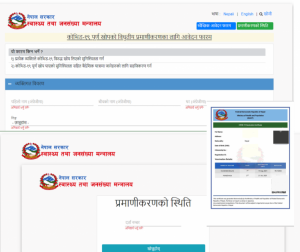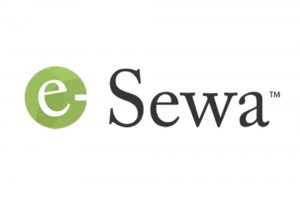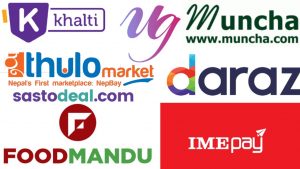- QR code payment is gaining momentum due to social distancing during the Covid-19 pandemic.
- The Nepal Rastra Bank has introduced a draft of QR Code Guidelines, Framework, and Specifications with three major payment principles: interoperability, scalability, and security.
- The evolution of digital payment platforms and increasing consumers’ preference towards e-payment secures a bright future for QR code payment.
Lately, the QR code has revolutionised digital payment services all over Nepal. Many people have started preferring digital platforms like e-wallets, mobile banking, and various other payment service operators (PSOs) and payment service platforms (PSPs) for online financial transactions.
Several large and small-scale corporations, from supermarkets to groceries, restaurants, and local vendors, all kinds of traders are accepting QR code payments these days. Customers can make payments simply by scanning the QR code, which they find to be the most convenient transaction.
What is the QR code system?
A quick-response (QR) code is a two-dimensional barcode that consists of black squares arranged inside a square grid on a white background. The code is integrated with machine-readable information, which you can access through a QR code scanner or a smartphone camera.

Originated from a Japanese company back in the 1990s and once used for the automotive industry, a QR code system is nowadays massively used in various sectors worldwide. Nepal is no exception to the implementation of the QR code system.
How does QR code payment work?
QR code payment is as simple as scan and pay; all you need is a QR code scanner or just a smartphone camera, to be more specific. However, the process of scanning a QR code may vary as per the services you are using it for.
You can pay by scanning the code attached to a product, or sometimes retailers can accept payment by scanning the QR code on your phone that provides your credit card details.
Why choose QR code payment?
QR code payment is more than just a quick way of making payment. Besides instant payment, it comes with many other advantages: top security, easy set-up, and high reliability.
Making payment via a QR code provides top-level security since you do not need to share any confidential details like credit cards. All our personal information is stored encrypted in the code. It can be an efficient substitute for point-of-sale infrastructures by eliminating special billing equipment.
It also prevents technical errors or device faults that you might face using credit cards, making them more reliable.
QR code usage in Nepal
The Covid-19 pandemic has immensely boosted the Scan and Pay service through the QR code in Nepal also. People being concerned with their hygiene are supporting the contactless payment system. Evolving digital payment service providers like Fonepay, IMEPay, Khalti, QPay, and SmartQR also encourage QR code payment by offering their users Scan and Pay services.
According to a report by the Nepal Rastra Bank, the number of QR-based transactions from mid-December 2020 to mid-January 2021 was 372,176. Similarly, the transactional amount was Rs 1.245 billion. The next month, the number of transactions increased to 535,790 and the amount to Rs 1.712 billion, suggesting a clear rise in the use of QR code payment.
Subash Sharma, the CEO of F1 Soft International, also states that there are over 275,000 traders using the QR codes for payment all over Nepal. His company, eSewa, has acquired 75,000 of them for Fonepay service. Fonepay has collaborated with more than 50 banks for QR code payment via mobile banking.
To promote QR-based payment, the Payment System Department of Nepal Rastra Bank has prepared a QR Code Guidelines, Framework, and Specifications on January 27, 2021. Moreover, the government of Nepal has initiated the process of opening a bank account via the Nagarik app. The KYC verification while opening the bank account can now be done on the Nagarik app, by scanning the QR code. This initiation by the Nepal government is unique and a catalyst for the digital Nepal campaign.
How secure is QR code payment in Nepal?

There have been records of harmful QR breaches in many developed countries. The scribbled nature of QR codes makes it almost impossible for humans to spot in case of any malice. Cybercriminals can fake a QR code and replace it with an official QR code assigned by businesses. This makes the data stored in the code more vulnerable to cyber theft.
The good thing is that Nepal is still in its initial phase of the digital economy, where QR payment is a very new concept. Not many people are familiar with its services, making them less likely to access any unauthorised QR code. Plus, cybersecurity is making some major progress with implementing highly influential computer programmes and cyber policies.
Major uses of QR code in Nepal
You can find QR codes in various good and service sectors like departmental stores and small shops, and many banks and financial institutes (BFIs). You can make payments in supermarkets via a QR code scanner using a digital wallet. Local vendors and shops are also using QR codes for quick payment. Fruits and vegetable markets also feature QR code payments for grocery shopping.
Another major usage of the QR codes is found at restaurants and cafeterias. It can be used to access the food menu and place your orders directly from your phone. This avoids using a physical menu, which can act as a transmission agent of diseases due to person-to-person use.
You can clear your bill with contactless payment via a QR code. Likewise, many online food delivery services like Foodmandu have started accepting payments via QR codes.
Commercial banks like Prabhu Bank Limited and Nabil Bank Limited have introduced their QR payment services for vendors in marketplaces like Kalimati Fruit and Vegetable Markets and Kuleshwor fruits market.
Future and challenges of QR code Payment in Nepal

Retailers and consumers have been using cash as primary means of payment for many generations. Switching to any e-payment services like QR code will be a long-running process. Nevertheless, consumers are showing more interest in digital payment considering safe trade and avoiding physical contact as much as possible.
PSOs like eSewa have been offering QR payment services without charging any additional fee during transactions to encourage such platforms. Around 64.65 per cent of the total population in Nepal is estimated to be financially active under the age group of 15-64 years. This generation has access to different media that can raise awareness of digital payment significance, so the numbers of users is expected to grow in the future rapidly.
QR code payment systems can play an impactful role in changing informal sectors into the formal economy. However, Nepal needs to tackle challenges in many infrastructural and behavioural traits before reaching the full potential of e-payment. The number of internet users is impressively growing but still not enough to process an established digital economy.
The lack of interoperability is another major issue for a stable digital payment service. Rapid growth in several PSOs and PSPs may result in an imbalance in the ecosystem of the digital economy. To avoid this hurdle, a unified payment switch is necessary.
A platform like Smart QR developed by the private tech sector enables users to connect different PSPs’ QR payment services via the same application. Such QR switching technology can help build an interoperable network and facilitate e-payment.
Conclusion
QR code payment can be a vital factor in uplifting Nepal’s digital economy. The government giving more priority to digital payment systems and the central bank to promote this system can be a head start for QR code payment.
Mass awareness campaigns and promotional events can also influence this transition. Infrastructural development like high-speed internet connection and wider user accessibility must be considered. Payment service providers, payment service operators, bank and financial institutes, and traders should work together to bring interoperability to their digital payment services.
The ultimate goal should be offering a one-stop solution for the consumers to access all sorts of e-payment services, including QR code payment.



























